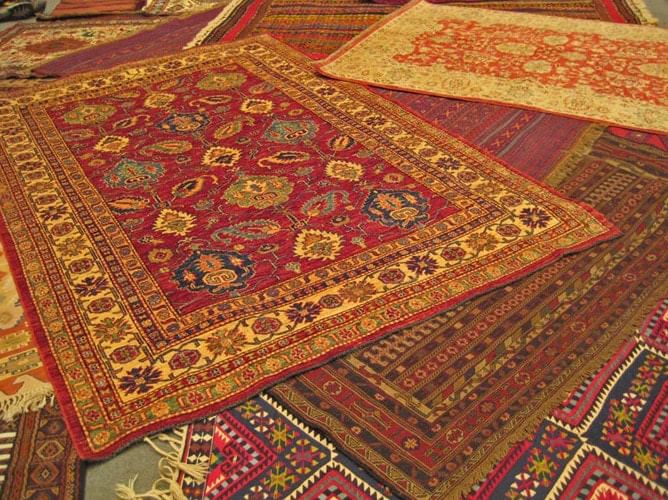Class 8 Science Question Answers - Synthetic Fibres and Plastics (Old Syllabus)
Q30: Why rayon is different from other synthetic fibres?
Ans: Rayon is the only synthetic fibre obtained from a natural source that is wood pulp, that’s why it is different from other fibres.
Q31: What are the disadvantages of synthetic fibres?
Ans: Following are the disadvantages of synthetic fibres:
- Synthetic fibres cannot absorb moisture. This makes them unsuitable to be warm during summer because in summer when our body sweats. These fibres make body sticky and sometimes cause skin irritation.
- They are dangerous to be worn near fire or heat, as they easily catch fire and is unfit to be worm.
- They cannot be easily ironed as they melt very easily.
Q. 32. Name five articles. Write the type of fibre used?
Ans. (i) Coconut rope: Natural fibre
(ii) Cotton clothes: Natural fibre
(iii) Polyester clothes: Synthetic fibres
(iv) Basket: Synthetic fibre
(v) Parachute: Synthetic fibre.
Q. 33. What are synthetic fibres? Give two examples.
Ans. A synthetic fibre is a chain of small units joined together like necklace beads. Each small unit is actually a chemical substance. Example: Rayon and Nylon.
Q. 34. What is rayon? Why is it called an artificial silk?
Ans. Rayon is synthetic fibre having properties similar to that of silk. So it is called artificial silk. It was obtained by chemical treatment of wood pulp.
Q. 35. What are the uses of rayon?
Ans. Although rayon is obtained from a natural source called wood pulp, yet it is a man made fibre. It is cheaper than silk. Rayon is mixed with cotton to make bedsheets or mixed with wool to make carpets.
 Articles made of Rayon
Articles made of Rayon
Q. 36. What are the properties of nylon?
Ans. (i) Nylon fibres are strong.
(ii) They are elastic and light.
(iii) They are easy to wash and lustrous.
Q. 37. What are the uses of nylon?
Ans. Nylon fibres are used to make many articles, such as socks, ropes, tents, toothbrushes, car seat belt, sleeping bags, curtains, etc. Nylon is also used in making parachutes and ropes for rock climbing.
 Articles made of Nylon
Articles made of Nylon
Q. 38. Why is polyester quite suitable for making dress materials?
Ans. Polyester is a synthetic fibre which is quite suitable to make dresses and other clothes due to its properties. It does not wrinkle easily. It remains crisp and is easy to wash. It is light and durable. It takes very less time to dry.
Q. 39. What are the raw materials used in making polyester?
Ans. Actually polyester is made up of the repeating units of chemical called an ester. Esters are the chemicals which give fruits their smell. The fabrics are sold by the names like polycot, polywool and terrycot.
Q. 40. What are the qualities of synthetic fibres which make them more popular than natural fibres?
Ans. The following properties make the synthetic fibres more popular:
(i) They are cheaper than natural fibres.
(ii) They are available in variety of colours.
(iii) They are more durable than natural fibres.
(iv) They are affordable.
Q. 41. Why is it convenient to store food in plastic containers than metals?
Ans. Plastic containers seem most convenient than metal containers. This is because of their light weight, lower price, good strength and easy handling. Being lighter as compared to metals, plastics are used in cars, aircrafts and spacecrafts also.
Q. 42. Why are plastics used widely in the industries and household articles?
Ans. Plastic is very light, strong, durable and can be moulded into different shapes and sizes. It is used in various purposes. Plastics are generally cheaper than metals. It is also bad conducter of heat and electricity. This is because they are widely used in industries and household articles.
Q. 43. Write some uses of plastics based on the poor conductivity of heat and electricity.
Ans. Plastics are poor conductors of heat and electricity. That is why electrical wires have plastic covering, and handles of screw drivers are made of plastics. Handles of frying pans are also made of plastics.
Q. 44. What are biodegradable and non-biodegradable materials? Explain with examples.
Ans. Biodegradable material: A material, which gets decomposed through natural process, such as action by microorganisms, is called as biodegradable material. For example, paper, leaves, vegetable, fruits, etc.
Non-biodegradable material: A material, which is not easily decomposed by natural processes, such as action of microorganisms, is called as non‑biodegradable material. For example, glass, copper, plastics and synthetic fibres, etc.
Q. 45. Write disadvantages of plastics.
Ans. Plastics take several years to decompose, so they are not environment‑friendly. Plastic causes environmental pollution; besides the burning process in the synthetic materials is quite slow and it does not get completely burnt easily. In this process it releases lots of poisonous fumes into atmosphere causing air pollution.
Q. 46. Say ‘no’ to polythene bags and say ‘yes’ to paper bags. Comment on this slogan.
Ans. When we use polythene bags and throw them here and there, they are eaten by the animals like cows. The plastic materials choke the respiratory system of these animals or form a lining in their stomachs that can cause their death. Polythene bags are responsible for clogging the drains. So we should say ‘no’ to polythene bags and say ‘yes’ to paper bags.
Q. 47. Explain 4R principle.
Ans. 4R stands for:
(i) Reduce the use of non‑biodegradable things.
(ii) We should use the thing again and again (Reuse).
(iii) We should use the things which can be recycled (Recycle).
(iv) Recover the lacking substances.
|
18 videos|34 docs|19 tests
|
FAQs on Class 8 Science Question Answers - Synthetic Fibres and Plastics (Old Syllabus)
| 1. What are synthetic fibers? |  |
| 2. What are the advantages of synthetic fibers over natural fibers? |  |
| 3. How are synthetic fibers produced? |  |
| 4. Are synthetic fibers environmentally friendly? |  |
| 5. What are some common uses of synthetic fibers? |  |
















